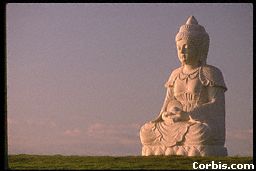This ancient massage technique has been practised in India for thousands of years. Used daily, it is normal to massage babies as well as the elderly. Women gather to massage aromatic oils into thier hair as part of their grooming routine. Massage in public places is a common sight, in busy market places or even on the beach. Many barbers offer "champi" (head massage) to their customers as part of their services. The word "shampoo" is taken from the Hindi word "champi" - being "champi-ed" means to have ones head massaged. It is ironic that many Western hairdressers now routinely feature head massage as part of the "shampooing process.
Indian Head Massage or "Champissage" was developed and brought to the West by Narendra Mehta. The rise in interest in this subject bagan as recently as 1981, when Mehta took an exhibition stand at the Mind, Body & Spirit eshibition at Olympia in London. Following on from this, Mehta began to run courses to teach his techniques to others, and he is now principal of the London Centre of Indian Champissage.
This unique therapy should perhaps be renamed: Indian Head, Neck and Shoulder Massage, since these are the areas included in the treatment.
Indian Head Massage helps to relieve the symptoms of eye strain, tinnitus, headaches, sinus congestion, neck or shoulder tension and insomnia.
It reduces anxiety, improves concentration, and helps to relieve mental fatigue, depression and tiredness. Relaxes muscle tension in the neck and shoulders, improves circulation, increasing the oxygen supply to the muscles and the brain. Lymphatic drainage is improved, releasing toxins from the body.
One of the advantages of this treatment is that it can be done over clothes, which is a benefit for the shy or nervous client. No products are necessary, although the use of carrier oils, and even essential oils, does greatly enhance this massage treatment.
|
